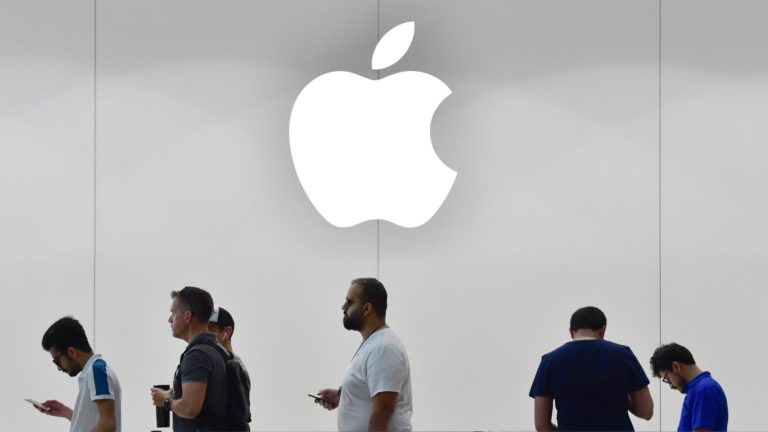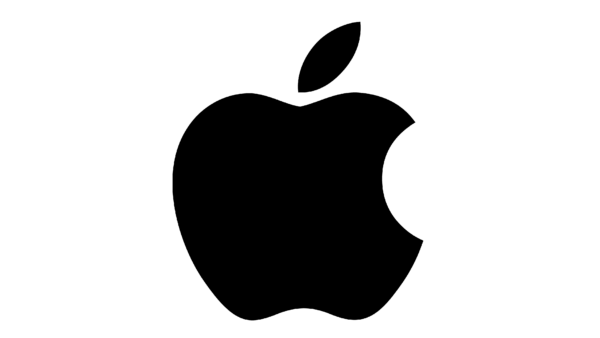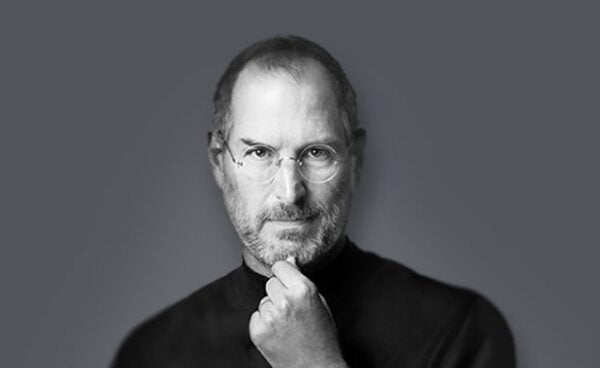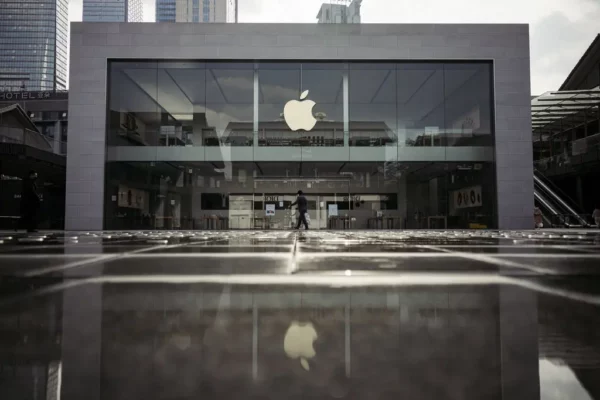Apple Marketing Strategy: The Secret Behind its Simple Yet Successful Marketing Strategy

Apple Marketing Strategy: The Secret Behind its Simple Yet Successful Marketing Strategy
Apple is a known brand for innovation and technological advancement in the computer and consumer electronics industries. It has one of the best marketing strategies of all time because they recognise that marketing is one of the key parts of a business venture and affects its consumer success. To further entrench itself in the market, Apple has always taken precautions to avoid introducing new market challenges into its marketing strategy.
Forbes claims that Apple Inc. is one of the most valuable brands in the world. This is no surprise to many considering Apple’s $263 billion brand worth and the fact that it has won the CMO Survey Award for Marketing Excellence ten times in a row. This is due to Apple’s consistent marketing brilliance, which other businesses may emulate by studying and implementing its basic principles.
Apple’s marketing is so successful that it has established a standard for other businesses aiming for the same level of global recognition, revenue growth, and tenacity.
Marketing includes choosing the exact channels via which a product or service will be presented in a specialised market and promoting it among potential customers to persuade them to purchase the product. Marketing is not simply limited to selling products and services to end customers. Apple excels at this: it raises consumer knowledge of the product, employs a successful marketing plan, and focuses on creating a need for the product across many market segments.
The success of products like the iPod, iPhone, and iPad, which have all transformed their respective markets, is directly related to their marketing techniques.
Apple goes above and beyond what other companies do by concentrating on developing items for their target market and devoted customers who believe using the company’s products improve their quality of life. What factors account for Apple’s continued success as a top marketer for over a decade? To find out, let’s take a look at its marketing plan.

About Apple
With its headquarters in Cupertino, California, Apple is a global technology firm specialising in software, hardware, and online services. Apple was the largest company in the world by market capitalisation as of June 2022, the fourth-largest provider of personal computers by unit sales, and the second-largest manufacturer of mobile phones. One of the Big 5 American IT companies, Apple is the largest technical corporation by sales.
On April 1, 1976, Apple Inc. was founded as Apple Computer Company by Steve Jobs, Steve Wozniak, and Ronald Wayne to develop and commercialise Wozniak’s Apple I personal computer. Jobs and Wozniak founded the company as Apple Computer, Inc. in 1977, and the Apple II, the company’s next computer model, immediately became a market leader.
In 1980, Apple went public with immediate financial success. The business created computers with cutting-edge graphical user interfaces, like the original Macintosh, introduced in the highly acclaimed Ridley Scott commercial “1984”. By 1985, issues arose with the company’s expensive products and management power disputes. Wozniak left Apple amicably and moved on to other endeavours, whereas Jobs bitterly left Apple and started NeXT, taking some Apple colleagues with him.
Throughout the 1990s, as the personal computer market grew and changed, Microsoft Windows’ duopoly on cheaper PC clones powered by Intel ate away a sizable portion of Apple’s market share. When the company was on the verge of bankruptcy in 1997, the corporation bought NeXT to fix its failed operating system strategy and convince Jobs to return.
Jobs led Apple back to profitability over the following ten years using a variety of strategies, like introducing the iMac, iPod, iPhone, and iPad to widespread acclaim launching “Think different” and other iconic advertising campaigns, and establishing the Apple Store retail chain, and acquiring many businesses to diversify the company’s product line. Tim Cook took over as CEO when Steve Jobs retired in 2011 because of health issues and passed away two months later.
In August 2018, Apple became the first U.S. firm valued at over $1 trillion. This was followed by valuations of $2 trillion in August 2020 and, most recently, $3 trillion in January 2022. The corporation is criticised for its environmental practices, corporate ethics, especially anti-competitive actions, and the labour practices of its contractors. Despite this, the business has a sizable fan base and a high level of brand loyalty.

Founder of Apple Inc:
Steven Paul Jobs was an American business mogul, industrial designer, media mogul, and investor. Jobs served as the co-founder, chairman, and CEO of Apple and Pixar’s majority shareholder, the founder, chairman, and CEO of NeXT, and the chairman and majority shareholder of Pixar after The Walt Disney Company acquired that company. He and his early business colleague and fellow Apple co-founder Steve Wozniak are widely acknowledged as being among the forerunners of the personal computer revolution of the 1970s and 1980s.
Jobs was born in San Francisco, the son of a German-American mother and a Syrian father. He enrolled at Reed College in 1972 but left the following year. He visited India in 1974 in search of awakening and to study Zen Buddhism. To market Wozniak’s Apple I personal computer, he and Wozniak co-founded Apple in 1976. A year later, the team became well-known and incredibly wealthy thanks to the creation and marketing of the Apple II, one of the earliest and most popular mass-produced microcomputers.
In 1979, Jobs recognised the economic potential of the mouse-driven, graphical user interface Xerox Alto (GUI). Due to this, the failed Apple Lisa was created in 1983, followed by the ground-breaking Macintosh, the first mass-produced computer with a GUI, in 1984. With the arrival of the Apple LaserWriter, the first laser printer to support vector graphics, the Macintosh revolutionised the desktop publishing sector in 1985.
After a protracted power struggle with the company’s board and then-CEO John Sculley, Jobs was forced out of Apple in 1985. Jobs founded NeXT, a computer platform development company focused on computers for higher education and corporate industries; in the same year, he left Apple with a small group of Apple workers.
Additionally, by providing financial support to George Lucas’s Lucasfilm’s computer graphics branch in 1986, he contributed to the growth of the visual effects business. The new company was called Pixar, which went on to make the first 3D computer-animated feature picture, Toy Story (1995), and has since grown to be an animation studio, churning out over 25 films.
After Apple bought NeXT in 1997, Jobs rejoined the firm as CEO. He had a major role in saving Apple from bankruptcy at the time. With the help of English designer Jony Ive, he created a range of goods with a significant cultural impact. This line of products included the “Think different” advertising campaign, the iMac, iPad, iPod, iPhone, iTunes, and iTunes Store. The original Mac OS was superseded in 2001 by the entirely new Mac OS X, which was built on NeXT’s NeXTSTEP architecture and gave the operating system its first contemporary Unix-based foundation.
Jobs was identified as having a pancreatic neuroendocrine tumour in 2003. At 56, he passed away from a tumour-related respiratory arrest on October 5, 2011.
Top reasons Apple has been successful in its marketing strategy
-
Apple Keeps Its Product Presentation and Marketing Simple
Apple’s products adhere to the simple is better ethos; they don’t overburden their target market with options, criteria, or even choices.
Apple keeps it’s messaging and images simple and lets its goods do the talking. They know their items will sell without the most elaborate and costly ads.
This tactic is evident in their logo, an apple with a missing corner. Even their retail locations are made to encourage product testing and inspection rather than just box purchases.
In addition to having short, basic names that are easy to remember, the products feature a well-liked, sleek, minimal style with neutral colour palettes. The organisation lessens confusion by streamlining its website and sales copy using simple language and emphasising the advantages customers unquestionably require.
This is a component of their content marketing genius, where they create high-tech products without using high-tech language. Apple’s marketing campaigns and advertising emphasise how the product may improve and transform your life rather than just listing its features and characteristics.
-
Apple Knows Its Target Audience and How to Reach Them
Apple has put a lot of effort into identifying its target market, and they know their likes, dislikes, routines, and preferred linguistic style. A fantastic link between a potential customer and the business and a long-lasting connection for an existing client is created by streamlining the marketing process in a language the audience can comprehend.
Apple includes all of its technical information, typically found below the fold rather than on the face.
Customers who visit the websites must scroll past the attractive and aesthetically pleasing product photos and the plain, large-font writing that describes the product’s benefits.
While iPad adverts from Apple feature joyful people enjoying themselves and the ease of use, sales are fueled by this persistent expression of positive feelings. They provide far more than that, not just additional storage or battery life.
The iPhone isn’t simply “a smartphone”; it allows you to put the power of an Apple computer on your phone, for example, in the iMac product commercials. Both of these devices assist make computing fun and engaging.
-
Apple Provides A well-appreciated Customer Experience
Apple places a great value on the customer experience, covering all aspects like comparing many product versions to one another, testing out new items in a store, purchasing the product, getting it, unwrapping it, and configuring the devices. The company claims that everything is meticulously made to satisfy the customer’s needs.
Like, when it comes to installation, one of the things that Apple enthusiasts really value about Apple computers is that they are incredibly simple to set up. To improve those designs, Apple invests a lot of money and many hours in testing and replication.
Warm lighting, monochromatic colour palettes, and the layout of the store’s elements are all thoughtful additions to the retail establishment’s thoroughly considered design.
-
Apple Creates Mystery and Hype Around the Product
When a business introduces a new product to the market, the marketing department typically releases information about the product. Customers should be informed of all product details to pique their interest and create anticipation. On the other hand, Apple adopts a novel and distinctive strategy, building anticipation by withholding details about new products as they tease them out.
This is why one of Apple’s strongest marketing strategies is to create mystique surrounding introducing new products. It is a clever strategy since it converts the target market into ardent supporters by piquing their curiosity and motivating them to look up more information and spread anything they learn about the product.
-
Have a Community of Loyal Customers
Apple has put a lot of effort into creating a global community of devoted users, consumers, and fans for over 10 years. Customers are encouraged to desire to be a part of the group by Apple’s marketing methods since it is seen as “cool.” Apple cleverly used this self-universality perception to give its customers the impression that the company knows and identifies with them.
Gaining clarity on your company’s brand values and personality can help create a strong and engaged community of people, which even small companies may leverage to attract loyal users and consumers.
Ensuring the marketing copy and content reflect and express those beliefs and personalities is a crucial next step. The website’s visuals, fonts, and colour scheme must match the phrases you used to represent your brand.
-
Consider the Value of the Products
Customers may be ready to pay a greater price because they believe the brand is of amazing quality or a higher status symbol, making perceived value crucial from a business standpoint. This explains why Apple continues to outperform its rivals.
Even though Samsung sold more smartphones in the last months of 2017, Apple still earned 87% of all smartphone revenues, creating a massive monopoly.
-
Substantial Product Placement
This contributes mainly to apple marketing. The business is connected to Hollywood. Apple acknowledged in federal court that product placement is its primary advertising method.
“Apple’s workers work closely with Hollywood on so-called product placement so that its gadgets are featured in movies and television shows, ” according to Phil Schiller, the Apple SVP of global marketing.
It makes business sense for the company because the cost is less than the hardware itself. Giving it out for free can cut down on spending on advertising in movies and television shows while placing the products in front of millions of viewers.

Conclusion
One of the top trillion-dollar brands in the world is Apple. What’s the formula for its success? Its promotional approach. It has consistently positioned itself in the upscale market and targets high-end consumers with its product offerings. Apple’s clever marketing techniques are why it has such devoted customers, which many companies still cannot comprehend.







